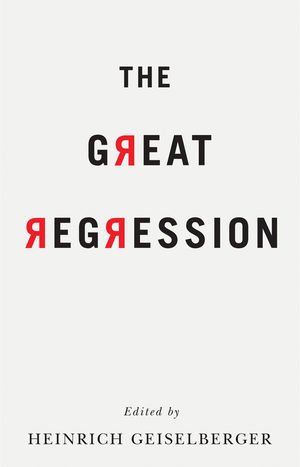https://www.nytimes.com/2018/10/27/opinion/are-the-danes-melancholy-are-the-swedes-sad.html
The recent report by the White House Council of Economic Advisers on the evils of socialism has drawn a great deal of ridicule, and rightly so. It boils down to something along the lines of "You want Medicare for All? But what about the terrible things that happened under Mao Zedong?" That's barely a caricature.
However, one issue raised by the report has drawn some sympathetic appreciation even from liberals: the discussion of the Nordic economies, which are widely seen by U.S. progressives as role models. The report points out that real gross domestic product per capita in these economies is lower than in the U.S., and argues that this shows the costs of an expansive welfare state.
But is a negative assessment of the Nordic economies really right? That's not at all clear. That lower G.D.P. number conceals two important points. First, by any measure people in the lower part of the income distribution are much better off in Nordic societies than their U.S. counterparts. That is, there is a lot less misery in Scandinavia — and because everyone has some chance of falling into low income, this reduces the risk of misery for a much larger share of the population.
Second, much of the gap in real G.D.P. represents a choice, not a cost. Nordic workers have much more vacation, much more time for family and leisure, than their counterparts in our "no vacation nation." So I thought it might be useful to put together some information on how the Nordic economies actually compare to the U.S. First of all, the Nordics really have made drastically different choices in public policy. They aren't "socialist," if that means government control of the means of production. They are, however, quite strongly social-democratic: as Exhibit 1 shows, they have high taxes, which finance much more generous social benefits than we have here. They also have policies on wages, working hours, and more that tilt the balance toward workers in a number of dimensions.

So how do these policy choices affect individual incomes? Exhibit 2, put together with the help of my Stone Center colleague Janet Gornick, shows how incomes at different percentiles of the income distribution in Denmark and Finland countries compare with the US. (These are "equivalized" household incomes adjusted for household size. Unfortunately, for bizarre legal reasons the LIS Center, the source of these data, doesn't have recent numbers for Sweden, but they presumably look similar.) Clearly, the Nordic economies are better for lower-income families — roughly the bottom 30 percent of the population.

But this understates the case, because these data don't include "in kind" benefits like health care and education. All of the Nordic countries have universal health care — not just single-payer, but for the most part direct government provision (a.k.a. "socialized medicine.") This compares with the U.S. where — especially before the Affordable Care Act went into effect — lack of health insurance was common even for families near median income, and high deductibles are an obstacle to care even for many of the insured.
Nordic education also lacks the glaring inequality in quality all too characteristic of the U.S. system.
Once you take these benefits into account, it's likely that at least half the Nordic population are better off materially than their U.S. counterparts. But what about the upper half?
As the CEA notes, real G.D.P. per capita is lower in the Nordics than in the U.S., and that's reflected in those lower incomes for the upper half of the income distribution. But it's worth looking at why G.D.P. is lower.
Exhibit 3 shows how real G.D.P. per capita in Denmark, Finland, and Sweden compares with the U.S., and the sources of that difference. It turns out that a large part of the difference — in the case of Denmark, more than all of it — comes from a lower number of hours worked annually per worker. This does notreflect mass underemployment. Instead, it reflects policy: all of the Nordic countries require that employers give workers a minimum of 25 days of paid vacation every year, while the U.S. has no leave policy at all.

Once you take vacations into account, Denmark and Sweden basically look comparable in performance to the U.S. Finland looks worse, but this is something of a special case: the Finnish economy has been ailing for a number of years, not because of socialism, but because its two premier exports — Nokia and wood pulp — were hit hard by technological change, and membership in the euro has made adjustment difficult.
The point for welfare comparisons is that while Nordic families at, say, the 60th percentile of the income distribution have lower purchasing power than their American counterparts, they also have much more free time and an arguably better work-life balance. Are they really worse off? You can make a good case that taking all of this into account, the majority of Nordic citizens are actually better off than Americans.
And for what it's worth, they think so too. The O.E.C.D. publishes measures of self-reported "life satisfaction"; all of the Nordic nations rank above the U.S. Objective measures like life expectancy and mortality rates are also much better in Scandinavia.
The bottom line is that real G.D.P. per capita isn't everything, and you shouldn't uncritically use that measure to judge how social democracy is working in Scandinavia.
Follow The New York Times Opinion section on Facebook, Twitter (@NYTopinion)and Instagram, and sign up for the Opinion Today newsletter.
Paul Krugman has been an Opinion columnist since 2000 and is also a Distinguished Professor at the City University of New York Graduate Center. He won the 2008 Nobel Memorial Prize in Economic Sciences for his work on international trade and economic geography. @PaulKrugman
-- via my feedly newsfeed

